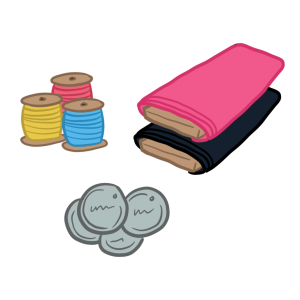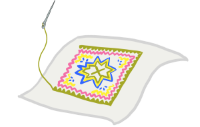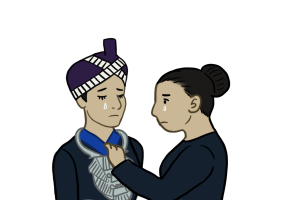In Hmong culture and society, traditional clothing is a symbolic and visual marker of one’s identity. Each unique outfit can tell which region someone is from, the craftsmanship used to make it, religious or spiritual context, and more.
What is the Significance of Hmong Clothes?
Socioeconomic Status
In the past, the level of detail in one's traditional outfit and the amount of accessories one had was an indicator of one's family wealth. Those who had more money could afford to buy various colorful threads for embroidery, colorful and printed fabrics, and silver coins for decorating belts and sashes.

Family Origin
Though the Hmong have a long history of being migrants, one can typically trace back their lineage from a specific region or province of a country in Southeast Asia. This is typically indicated by the traditional clothes of their family according to the Hmong subgroup that they belong to (i.e. White Hmong, Hmong Leng, Stripe Hmong, etc).

Embroidery Skill
Traditional embroidery, called "paj ntaub" (pronounced "pah-nthow"), which translates to "flower-cloth", was an art form and skill passed from mother to daughter. Mothers would begin teaching their daughters embroidery techniques when they reached the ages between five to eight years old. Knowing how to embroider was essential for carrying on tradition, culture, regional trends, and spiritual purposes. At new year celebrations, Hmong girls could show off their embroidery skills by wearing outfits with their embroidery work.

Spiritual
It is believed by Hmong society that long ago, when the Hmong of Southeast Asia still lived in China, they had their own written script. However, when their script was outlawed by the oppressive Chinese authorities of that time, they hid their alphabet and its meanings into their embroidery work. The Hmong of today may not be able to decipher their ancestors' hidden language, but certain symbols and designs still hold much spiritual significance. For example, Hmong women wear a short spirit collar on the back of their shirt called a "dab tsho" (pronounced "dah-chaw"). On this spirit collar are embroidered cross motifs meant to shield the women's back from evil and harmful spirits.

Celebration
Traditional clothing is worn on several celebratory occasions. This includes traditional weddings and new year celebrations.
For Hmong women, traditional wedding clothes are very significant and symbolize their transition from being a daughter to becoming a daughter-in-law. On the day of the wedding ceremony, the bride is dressed in traditional clothes procured by her soon-to-be-husband and his family at their home before travelling back to her parents' house for marriage rituals. Afterwards, the bride is dressed by her mother in the finest clothes her mother can afford (this is meant to be an intimate moment between mother and daughter) before sending her away to live with her new husband.

Funeral
The Hmong believe that when they pass away, one of their many souls (there are twelve) goes on a journey to join their ancestors in the afterlife. Traditional clothes play into this in that the deceased are dressed to their best in specific funeral garments. These garments usually consist of a long robe called a "tsho laus" (pronounced "chaw-low", which translates to "elder-shirt" that resembles their regional/subgroup's style of clothes. Specific designs are embroidered on the sleeves that are meant to symbolize prosperity and wealth in the afterlife. A typical design one will see are angular grids or squares symbolizing the interlocking arms of ancestors. It is believed that the maternal ancestors of the deceased will be able to recognize their descendants through identifying their own embroidery work.
